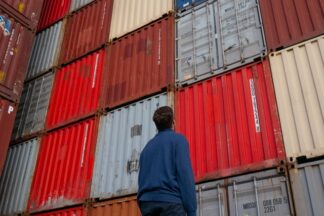This post is part of a series where I look at and into the true cost of certain goods and services. This time I’d like to look into the True Cost of all types Transport and Mobility: road, rail, aviation and water. The question therefore is: What are the total costs – the True Cost, i.e. including what is commonly called ‘externalities’ – of the different types of transport we use globally, both for passengers and for freight? Or if you prefer: how do different types of transport compare to each other when it comes to ‘collateral damage’?
Spoiler alert: It is really quite complex and rather diverse. And: public infrastructure investments and maintenance costs play a significant role in it.
This post is part of a series where I look at and into the true cost of certain goods and services. When in the previous post I looked at subsidies and the True Cost (associated with the True Price) for oil and gas, this time I’d like to look into what we know about the True Cost of Energy. Not just about fossil fuels, but indeed across the breadth of the energy spectrum.
The question therefore is: What are the total costs – the True Cost, i.e. including what is commonly called ‘externalities’ – of the
different types of energy we use globally?
Spoiler alert: It's very interesting - and also a bit suprising and counter-intuitive.
This is the first of a series that will look at and into true cost of certain goods and services. Cash subsidies thereby is one component, but certainly not the only one relevant one – indirect subsidies (e.g. in the form of environmental degradation or similar) need to be considered also. In this particular post, I’d like to focus on Oil & Gas subsidies, fossil fuels' True Cost, and what we know about these. What we already also learn: comparing apples to apples won't be easy.
True Cost calculations are only ever 'best available efforts', and much data remains missing or speculative at best. This is an issue we will encounter again also once we'll look into renewables, or indeed other kinds of industries outside of energy.
Unless the top line of company executives are held accountable for and judged by their contribution to the company’s risk management and mitigation efforts, including importantly CSR and sustainability performance, the company will struggle. Without senior commitment and engagement, the system only ever allows for minor ‘bug fixes’.
What of all that are buyers aware of, and how do they use it?
This is the second of the two questions for which the most insightful research with fairly hard data has been published by Prof. Doug Miller from Northumbria University in Newcastle. The two most relevant papers in this context are: 'What price a living wage' and 'Towards Sustainable Labour Costing in the Global Apparel Industry'
What do we know about how garment cost is broken down across the supply chain? This is the first of the two questions for which the most insightful research with fairly hard data has been published by Prof. Doug Miller from Northumbria University in Newcastle.
Supply chains, as a discipline of expertise, have come out of the hiding and recognise their role in reducing corporate risk. This is notably and specifically the case in fashion and textiles. At the same time, 'design' - not just in the creation room, but in all facets where it impacts the making, delivery and use of a product or service, is increasingly recognised as relevant.
Mid last year, an interesting campaign piece was delivered to my mailbox: London based Offset Warehouse launched a capsule collection of T-shirts retailing at £4.99 (app. Euro 6, plus P&P). Now, the point is, that even if these T-shirt were sold through a major retailer, they would hardly have retailed at more than £10 - and this at a vastly superior quality then is often case.
The wages discussion is far from over. Not 'just' when it comes to the slightly out-of-range bonuses some people in the finance industry, together with a number of high-level executives of other industries, earn. But rather globally, even in 'developed' Western markets. This applies to 'fair wages' for physically handicapped people e.g. the blind, and crosses over to living and minimum wage discussions in the countries such as the UK, the US, or Spain (white collar precariate). The fashion industry would have a lot to tell also in this context.
How expensive is fair labour really? This article summarises research data to answer these questions. In short: fair labour could be had for cheap.
How expensive is fair labour really? What would need to change in the price to make this a reality at the consumer end of fast fashion? This article diggs through some research data that while answering these questions. In short: fair labour could be had for cheap.
Recently, my colleague Ilaria Pasquinelli and I had the opportunity to participate in a, generally speaking, consumer facing product showcase and trade show.
For the purpose of this research, we built an interactive task which required the visitors to cut off one of their garment labels (i.e. the washing instructions), and then pin it to a map attached to a cork board according to 2 dimensions:
– ‘Made in‘: Where the garment was manufactured.
– ‘Made from‘: What the primary material the garment was made of.
On December 14th, PPR published the expert review report on Puma’s Environmental Profit and Loss Account (E P&L). The panel of experts that had been commissioned to undertake the review brought some of the most eminent names in the industry together, among them John Elkington, Peter Bakker, or Pushpam Kumar.
t is fairly old news, but merits repeating nevertheless: our current economy, at the verge of collapse as it is, is egocentric, and at the same time understates costs while overstating benefits.
In other words, it promotes a type of behaviour that is degeneratively competitive: the ‘me’ wants, needs, more of whatever it may be, while anything and everything else is losing out. No matter how high the cost for the bigger picture – society and the planet, that is – may be.





